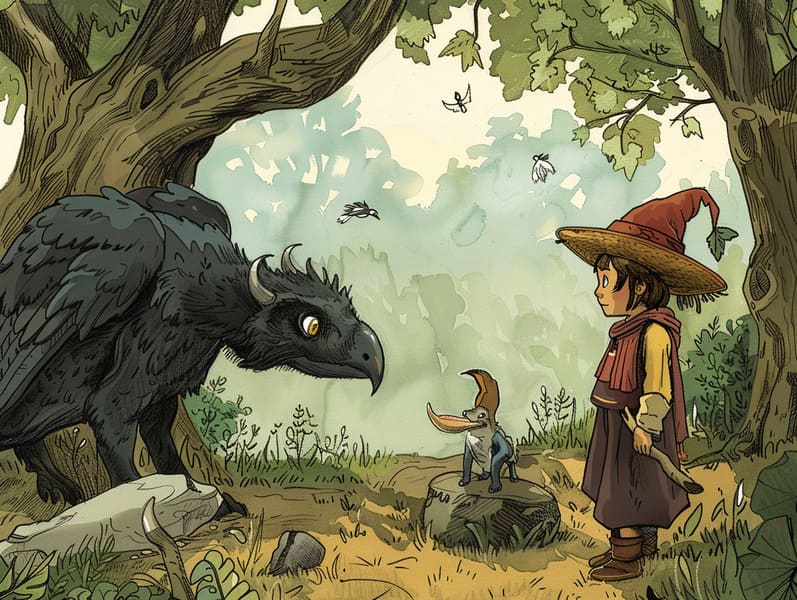Discovering the Beauty of Evening Tales: Building Valued Moments with Your Loved Ones
Discovering the Beauty of Evening Tales: Building Valued Moments with Your Loved Ones
Blog Article

Bedtime is a precious time for parents and children. It’s a chance to ease into rest, get cozy, and experience the enchantment of bedtime stories.
For lifetimes, children's bedtime stories have been a esteemed ritual, offering more than just a way to slumber. They provide an opportunity for relationship building, growth, and igniting dreams.
How Bedtime Stories Benefit Kids
Evening stories for little ones serve more than a way to close the day. They play a essential role in a child’s maturation and in building the adult-child connection. Here’s why they are important:
1. Closeness Moments: Nightly storytelling fosters a special bonding time between kids and their parents. It’s a moment of attachment that helps children feel loved and protected.
2. Speech Improvement: Listening to stories helps children develop their communication skills. They acquire new vocabulary, understand sentence structures, and sharpen their attention and interpretation abilities.
3. Creative Development: Children's tales move them to wondrous worlds, sparking vision. They dream of characters, settings, and adventures, which ignites their inventiveness.
4. Emotional Growth: Kids' tales often feature characters facing problems and feelings. These accounts help kids grasp and deal with their own sentiments, fostering emotional intelligence.
5. Brain Growth: Engaging with a story helps children develop mindfulness, memory, and reasoning skills. They improve to follow narratives, remember facts, and anticipate results.
Integrating Bedtime Stories into Your Night
Starting a bedtime custom that includes reading aloud stories is effortless and fulfilling. Here’s how to develop a treasured part of your evening routine:
1. Select a Comfortable Location: Pick a cozy place where you and your child can nestle in without disturbances. A relaxing bed or a cozy reading nook works beautifully.
2. Set a Regular Time: Determine a set time each night for bedtime reading. Uniformity helps children be accustomed and makes the routine easier to maintain.
3. Pick Age-Suitable Stories: Choose tales that suit your child’s developmental stage. Toddlers might enjoy visual books with uncomplicated narratives, while older kids may be interested in novels with more engaging plots.
4. Animate the Tale: Turn the tale feel vivid by employing different character voices, adding noises, and having your child to join in. Ask stuff about the story to keep them listening.
5. Set a Tranquil Atmosphere: Reduce the lights, use whispers, and create a relaxing environment to help your child settle down.
Locating Top Bedtime Stories
There are many places to look where you can find perfect bedtime stories for children. Here are some options to consider:
1. Children’s Literature: Try your nearby library or bookstore to find a varied selection of bedtime stories for kids. Browsing the shelves together can be a great activity that also permits children to select stories that appeal to them.
2. Online Sources: There are many online platforms that offer free bedtime stories. Sites like children's story websites provide a variety of short stories for kids that you can read on screen. These platforms are great for finding new and different stories without fees.
3. Apps for Storytelling: For nights when you’re too tired to read, try audiobooks or storytelling apps. These can provide a soothing voice to read your child a story, ensuring they still get their bedtime story fix. Apps often offer interactive aspects that can capture their attention further.
4. Unique Stories: Craft your own stories matching your child’s experiences. Personalized stories can be very engaging and meaningful. You can include your child in the creation process, making them a part of the adventure.
Positive Aspects of Short Stories
Short stories for kids are very advantageous for bedtime. They provide all the positives of longer stories but are more succinct, making them perfect for calming down before sleep. Here’s why short stories are a wonderful choice:
1. Simple to Understand: To-the-point tales are easy and effortless for children to follow, even after a long day. They can readily grasp the story and enjoy the story without getting lost.
2. Immediate Attention: These stories promptly engage children, seizing their focus and wonder. This makes them perfect for keeping bedtime customs smooth yet enjoyable.
3. Flexible Choices: Brief tales offer for variety in your bedtime books. You can choose a different story each night, keeping the ritual engaging and exciting for your child.
4. Time Efficiency: For busy parents, concise narratives are a time-saving way to check children still get their nightly dose of storytelling. They fit well into a full schedule while still offering the full positives check it out of a bedtime story.
The Effectiveness of "Read Me a Story"
The simple phrase, “Read me something,” can open a world of magic for children. Reacting to this request not only fulfills a child’s request for attention and engagement but also develops lasting recollections. Here’s why it’s wonderful:
1. Tie: Reading to your child builds a deep emotional link. It’s a time for closeness, sharing, and bonding.
2. Legacy: Forming a bedtime story tradition creates a prized tradition that children enjoy every night. It’s a habit that can be continued through generations.
3. Joint Growth: As you share stories, you’ll see your child’s growth and progress. Their questions, reactions, and understanding of the stories evolve, offering insights into their developing minds.
4. Safe Space: Bedtime stories provide a safe space for children to understand emotions, face fears, and find comfort in the safe presence of a parent.
To Sum Up
Sleep stories for kids are a effective tool for fostering a child’s maturation and building unforgettable times of bonding.